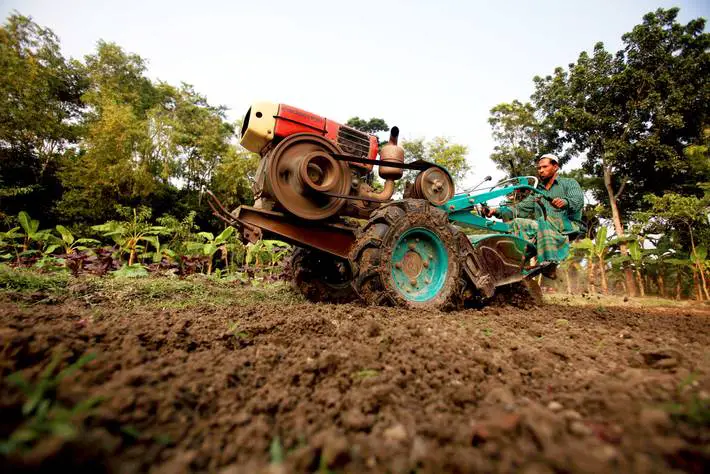This post may contain affiliate links which means I may receive a commission for purchases made through links. Learn more on my Private Policy page.
If you’re a farmer and passionate about sustainability, you might be wondering how you can make your farm machinery more environmentally friendly. As technology continues to evolve, there are numerous innovative ways to reduce the environmental impact of farming practices. From adopting precision agriculture techniques to exploring alternative power sources, there are exciting options available to mitigate the carbon footprint of farm machinery. Let’s explore some practical and effective ways to make your farm equipment more eco-friendly.
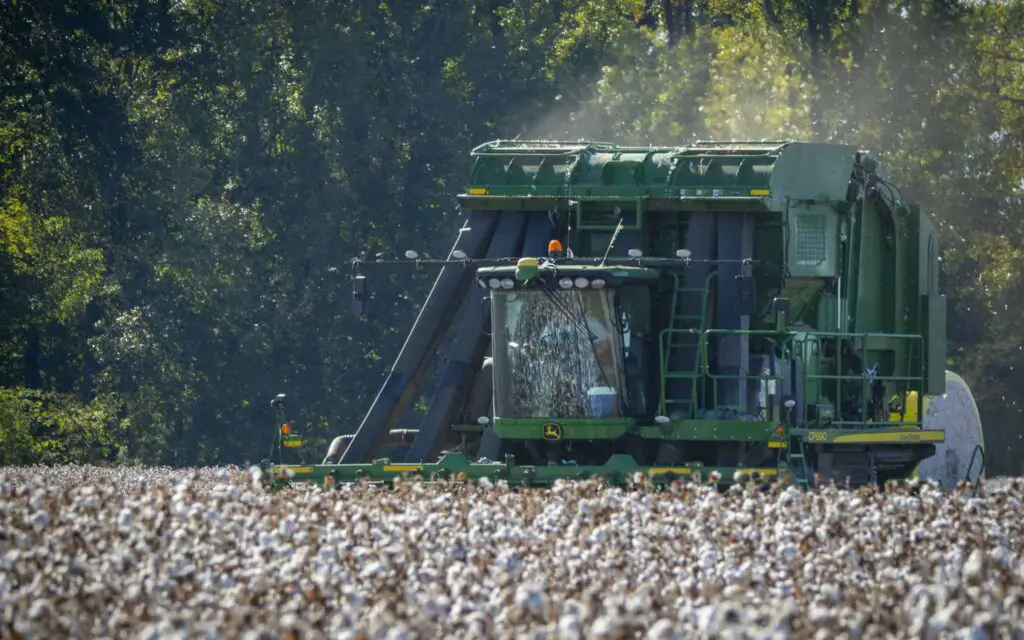
This image is property of www.ffa.org.
1. Choose Sustainable Energy Sources
1.1. Switch to Renewable Energy
One of the most effective ways to make your farm machinery more environmentally friendly is by switching to renewable energy sources. Traditional energy sources like fossil fuels contribute to greenhouse gas emissions and air pollution, which can harm both the environment and human health. By transitioning to renewable energy sources such as solar or wind power, you can significantly reduce your carbon footprint and minimize the negative impacts on the environment. Installing solar panels or wind turbines on your farm can provide clean and sustainable energy to power your machinery, reducing your dependence on non-renewable resources.
1.2. Use Biofuels
Another sustainable energy option for farm machinery is the use of biofuels. Biofuels are renewable fuels made from organic matter, such as vegetable oils or animal fats. They can be used as an alternative to traditional diesel or gasoline fuels in farm equipment. Biofuels produce fewer carbon emissions and pollutants compared to fossil fuels, making them a more environmentally friendly choice. It is important to ensure that the biofuels used are sourced sustainably, considering factors like land use, carbon emissions, and water consumption associated with their production.
1.3. Explore Solar Power
Solar power can be utilized not only for generating electricity but also for directly powering specific farm machinery. For example, solar-powered irrigation systems can reduce the reliance on electricity or diesel pumps, thereby lowering carbon emissions and operating costs. Solar energy can also be used to power electric fences, farm lighting, and even electric vehicles used on the farm. By harnessing the power of the sun, you can reduce your farm’s environmental impact and potentially save money on energy bills.
2. Implement Efficient Farming Practices
2.1. Optimize Machinery Usage
To make your farm machinery more environmentally friendly, it is essential to optimize their usage. This involves planning and scheduling tasks effectively to minimize idle time and unnecessary travel. By grouping tasks in a logical order and utilizing the most appropriate machinery for each task, you can reduce fuel consumption and emissions. Optimal machinery usage also means avoiding overloading or overworking the equipment, as this can lead to increased fuel consumption and potential damage to the machinery.
2.2. Properly Maintain Equipment
Regular maintenance of farm machinery is crucial for ensuring optimal performance and reducing environmental impacts. Well-maintained equipment operates more efficiently, minimizing fuel consumption and emissions. Regularly check and clean air filters, fuel filters, and cooling systems to prevent clogging and overheating. Keep tires properly inflated to maximize fuel efficiency and reduce soil compaction. Additionally, promptly address any leaks or mechanical issues to prevent fuel or oil spills that can harm the environment.
2.3. Reduce Tillage
Excessive tillage can have detrimental effects on soil health and lead to increased erosion and nutrient loss. By reducing tillage operations, you can help preserve soil structure and organic matter, improve water infiltration, and promote beneficial soil microorganisms. Consider using conservation tillage practices such as minimum tillage or no-till farming. These practices involve disturbing the soil minimally or not at all, which helps conserve moisture, reduce fuel consumption, and improve long-term soil health.
2.4. Practice Precision Agriculture
Precision agriculture utilizes modern technologies and data analysis to optimize farming practices. By employing precision agriculture techniques, you can make your farming operations more environmentally friendly. Use GPS and GIS (Geographic Information System) technologies to precisely map and navigate fields, enabling targeted application of inputs such as fertilizers and pesticides. This reduces the risk of over-application, minimizing chemical runoff into waterways and unnecessary expenses. Precision agriculture also allows for more accurate monitoring of soil conditions and crop health, enabling proactive interventions and preventing crop losses.
3. Adopt Precision Technologies
3.1. Utilize GPS and GIS
Global Positioning System (GPS) and Geographic Information System (GIS) technologies can greatly enhance the efficiency and sustainability of farm machinery. GPS enables precise mapping, navigation, and tracking of machinery, ensuring accurate and targeted operations. GIS provides a digital platform for storing and analyzing geospatial information, facilitating data-driven decision-making. By utilizing these technologies, you can optimize field operations, reduce fuel consumption, and minimize the environmental impact of your machinery.
3.2. Implement Variable Rate Application
Variable rate application (VRA) technology allows for the precise application of inputs like fertilizers, pesticides, and irrigation water based on real-time field conditions and crop needs. By mapping variations in soil properties, nutrient levels, and plant health, VRA enables you to apply inputs only where and when they are necessary. This results in reduced chemical usage, lower costs, and minimized environmental impacts. VRA can be integrated into farm machinery through compatible equipment and software, making it a valuable tool for environmentally friendly farming.
3.3. Use Soil Sensors
Soil sensors provide real-time data on soil moisture levels, nutrient content, and temperature. By installing soil sensors in your fields, you can gain valuable insights into the soil conditions, allowing for optimized irrigation and nutrient management. This technology helps prevent over-irrigation, which can lead to water wastage and nutrient leaching, negatively impacting both the environment and crop health. By applying irrigation and fertilizers precisely where needed, based on sensor data, you can conserve resources, reduce costs, and promote sustainable farming practices.
3.4. Apply Automated Control Systems
Automated control systems can be integrated into farm machinery to optimize operations and reduce human error. These systems utilize advanced sensors, actuators, and algorithms to automate tasks such as steering, implement control, and data recording. By minimizing operator input and controlling machinery functions precisely, automated control systems can improve efficiency, reduce fuel consumption, and decrease the potential for environmental impacts due to human error. Investing in these technologies can contribute to making your farm machinery more environmentally friendly.
4. Optimize Chemical Usage
4.1. Integrated Pest Management
Integrated Pest Management (IPM) is an environmentally friendly approach to pest control that focuses on prevention, monitoring, and targeted interventions. By using IPM principles, you can minimize the reliance on chemical pesticides and reduce their negative impacts on the environment. IPM involves practices such as crop rotation, biological control, and cultural management techniques to prevent pest outbreaks. Regular monitoring of pest populations helps determine the need for intervention and enables the use of targeted treatments, reducing chemical usage and potential harm to beneficial organisms.
4.2. Precision Spraying
To optimize chemical usage and minimize environmental impacts, consider implementing precision spraying techniques. Advances in technology have enabled the development of spraying systems that can precisely target pests or weeds while minimizing spray drift and off-target contamination. These systems utilize sensors and actuators to control droplet size, spray pattern, and application rate. By applying chemicals only where necessary and under optimal conditions, you can reduce waste, minimize the risk of environmental contamination, and promote sustainable pest management.
4.3. Proper Disposal of Chemicals
Proper disposal of agricultural chemicals is crucial to prevent environmental contamination and potential harm to humans and wildlife. Follow local regulations and guidelines for the safe disposal of unused pesticides, herbicides, and other chemical products. Do not pour chemicals down drains or into waterways, as they can contaminate water sources. Seek out appropriate collection facilities or hazardous waste disposal programs to ensure the proper disposal of these substances. Responsible chemical management is an integral part of making your farming practices more environmentally friendly.
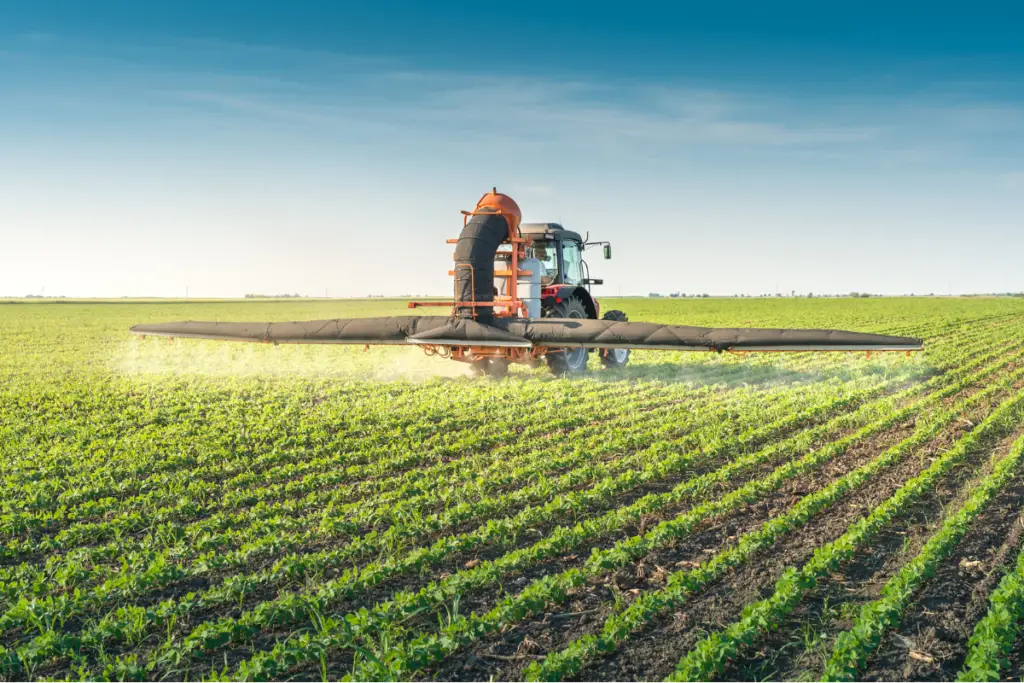
This image is property of mindseteco.co.
5. Enhance Soil Health
5.1. Implement Cover Crops
Cover crops are plants grown between main crops to cover the soil surface and provide various environmental benefits. They help prevent soil erosion, reduce weed growth, improve moisture retention, and promote nutrient cycling. Cover crops also increase organic matter content in the soil, enhance soil structure, and support beneficial soil microorganisms. By incorporating cover crops into your rotation, you can enhance soil health, reduce the need for synthetic fertilizers and pesticides, and improve overall farm sustainability.
5.2. Practice Crop Rotation
Crop rotation is a fundamental practice in sustainable agriculture that involves alternating the types of crops grown on a field from season to season. This practice helps break pest and disease cycles, reduces weed pressure, and improves soil fertility. Each crop requires different nutrients from the soil, and rotating crops helps ensure that the soil remains balanced and avoids depletion of specific nutrients. By implementing crop rotation, you can promote healthy soil ecosystems, enhance nutrient cycling, and reduce the reliance on chemical inputs.
5.3. Minimize Soil Compaction
Soil compaction can negatively impact soil health, reduce water infiltration rates, and impede root growth. Minimizing soil compaction is essential for maintaining healthy soils, enhancing crop productivity, and reducing environmental impacts. Avoid operating heavy machinery on wet soils, as this can lead to compaction. Consider adopting practices such as controlled traffic systems, which limit machinery wheels to specific traffic lanes, minimizing soil compaction across the field. Additionally, using appropriate tire inflation pressures and avoiding excessive tillage can help reduce soil compaction and promote healthy soil structure.
5.4. Improve Organic Matter Content
Organic matter is a crucial component of healthy soils, providing nutrients, improving water-holding capacity, and supporting beneficial soil organisms. Increasing organic matter content in the soil should be a priority in your efforts to make your farming practices more environmentally friendly. Implement practices such as incorporating crop residues, cover cropping, and applying organic amendments like compost or manure. These practices contribute to building organic matter, enhancing soil fertility, and promoting sustainable agricultural systems.
6. Reduce Water Consumption
6.1. Implement Drip Irrigation
Drip irrigation is a highly efficient method of delivering water directly to plant roots, minimizing water wastage through evaporation or runoff. Compared to traditional overhead sprinkler systems, drip irrigation can significantly reduce water consumption by delivering water precisely where it is needed. This technology also helps prevent weed growth and reduces the risk of disease spread, as foliage remains dry. By implementing drip irrigation systems, you can optimize water usage, conserve this precious resource, and reduce the environmental impact associated with irrigation practices.
6.2. Use Rainwater Harvesting
Rainwater harvesting involves collecting and storing rainwater for later use in irrigation or other farm applications. By capturing rainwater, you can reduce reliance on freshwater sources and minimize the energy required for pumping groundwater or treating surface water. Install rain barrels or cisterns to collect rainwater from rooftops, and direct it to storage tanks or reservoirs. This harvested water can be used as a supplement to irrigation or for other non-potable farm purposes. Effective rainwater harvesting can reduce water consumption, support sustainable farming, and contribute to environmental conservation.
6.3. Install Water Monitoring Systems
Water monitoring systems provide real-time data on soil moisture levels, precipitation, and evapotranspiration rates. By installing these systems in your fields, you can accurately monitor water requirements and optimize irrigation schedules. Adjusting irrigation practices based on actual soil moisture levels can prevent over-irrigation, conserve water resources, and reduce energy consumption associated with pumping water. Water monitoring systems also help identify areas of excess water usage or leakage, allowing for prompt repairs and more efficient water management.

This image is property of www.sa-green-info.co.za.
7. Consider Sustainable Pesticide Storage
7.1. Store Pesticides Properly
Proper storage of pesticides is crucial to prevent accidents, minimize human and environmental exposure, and maintain their efficacy. Store pesticides in a secure, dedicated area away from sensitive ecosystems, water sources, and animal habitats. Maintain appropriate storage conditions, such as temperature control and good ventilation, to avoid degradation or chemical reactions. Use lockable cabinets or rooms to restrict access to authorized personnel only, reducing the risk of accidental exposure or misuse. By following proper pesticide storage practices, you can ensure the safety of both your farm workers and the environment.
7.2. Prevent Contamination
To make your pesticide storage more environmentally friendly, it is essential to prevent contamination of surrounding areas. Designate a containment area or secondary containment system to capture any spillage or leaks. Ensure that the storage area is impermeable to prevent pesticides from seeping into the soil or water sources. Use absorbent materials or spill kits to quickly respond to any spills and properly dispose of contaminated materials. Regularly inspect storage areas for signs of damage or deterioration, addressing any issues promptly to prevent environmental contamination.
7.3. Dispose of Pesticide Containers Safely
Safe disposal of pesticide containers is a critical step in preventing environmental contamination. Empty pesticide containers can still contain trace amounts of chemicals and should not be discarded with regular waste. Rinse containers thoroughly and follow pesticide label instructions for proper disposal methods. Many countries have specific programs or collection centers for recycling or safe disposal of pesticide containers. Participate in these programs to ensure the responsible handling of pesticide waste and minimize its impact on the environment.
8. Explore Alternative Farming Methods
8.1. Organic Farming
Organic farming is a holistic approach to agriculture that emphasizes the use of natural inputs and excludes the use of synthetic chemicals, genetically modified organisms (GMOs), and irradiation. By adopting organic farming methods, you can minimize the environmental impact of your farm machinery. Organic practices focus on building soil health, promoting biodiversity, and maintaining ecological balance. Instead of relying on synthetic fertilizers and pesticides, organic farmers use techniques such as crop rotation, composting, and biological pest control. Consider transitioning to organic farming to reduce chemical inputs, protect ecosystems, and promote sustainable agriculture.
8.2. Regenerative Agriculture
Regenerative agriculture goes beyond traditional sustainability practices to actively restore and regenerate ecosystems and improve soil health. This holistic approach aims to create resilient farming systems that can adapt and mitigate the impacts of climate change. Regenerative agriculture involves practices like cover cropping, rotational grazing, agroforestry, and soil carbon sequestration. By implementing regenerative agriculture techniques, you can enhance soil fertility, increase biodiversity, improve water retention, and reduce soil erosion. These practices contribute to long-term sustainability, environmental protection, and the overall health of your farm.
8.3. Agroforestry
Agroforestry integrates trees or woody plants into agricultural landscapes to provide multiple benefits. By planting trees alongside crops or livestock areas, you can create a more sustainable and diverse farming system. Trees serve as windbreaks, reducing soil erosion and protecting crops. They also provide shade, improving animal welfare, and reducing heat stress. Agroforestry systems contribute to biodiversity conservation, carbon sequestration, and water management. By exploring agroforestry options on your farm, you can enhance environmental sustainability, diversify income streams, and improve overall farm resilience.
8.4. Hydroponics
Hydroponics is a soilless farming method that allows for the cultivation of plants in nutrient-rich water solutions. By growing crops hydroponically, you can optimize resource efficiency and reduce environmental impacts associated with conventional farming. Hydroponic systems use significantly less water compared to traditional soil-based agriculture, as water is recirculated and reused. Since hydroponic systems are typically grown in controlled environments, there is less reliance on pesticides and herbicides. Additionally, hydroponics can maximize space utilization, making it suitable for urban or limited land areas. Consider exploring hydroponics as an alternative farming method, especially for high-value crops with specific growing requirements.
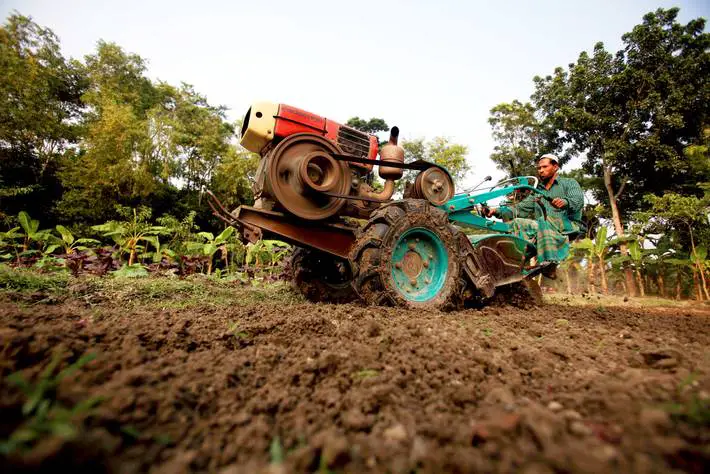
This image is property of www.fao.org.
9. Collaborate with Local Environmental Organizations
9.1. Seek Expert Advice
Collaborating with local environmental organizations and experts can provide valuable guidance and support in making your farm machinery more environmentally friendly. Seek out organizations that specialize in sustainable agriculture, conservation, or natural resource management. They can offer advice on sustainable practices, provide technical assistance, and connect you with relevant programs or funding opportunities. Engaging with experts can help you stay up-to-date with the latest research, best practices, and regulations related to environmentally friendly farming.
9.2. Participate in Environmental Programs
Local environmental organizations often coordinate programs and initiatives aimed at promoting sustainable farming practices. Participating in these programs can provide you with access to resources, training, and networking opportunities. Look for initiatives that focus on areas such as water conservation, soil health, biodiversity enhancement, or energy efficiency. By becoming actively involved in these programs, you can showcase your commitment to environmental stewardship, learn from other farmers, and contribute to broader environmental conservation efforts in your community.
10. Monitor and Evaluate Environmental Performance
10.1. Conduct Regular Audits
Regularly monitoring and evaluating the environmental performance of your farm machinery and practices is crucial for continuous improvement. Conduct periodic audits to assess key environmental indicators, such as energy consumption, water usage, chemical usage, and soil health. These audits can help identify areas of improvement, track progress, and make informed decisions regarding sustainable farming practices. Seek professional assistance or use available tools and resources to conduct comprehensive audits and gain a deeper understanding of your farm’s environmental impact.
10.2. Set Environmental Goals
Setting environmental goals is an effective way to drive positive change and focus your efforts on specific areas of improvement. Establish realistic and measurable goals related to energy efficiency, water conservation, chemical reduction, soil health, or other sustainability indicators. Clearly defined goals can motivate you to implement environmentally friendly practices and track your progress over time. Regularly review and update these goals as you achieve milestones or identify new opportunities for improvement.
10.3. Track and Document Improvements
Documenting improvements and successes in your farm’s environmental performance is essential for recognizing achievements and sharing your experiences with others. Keep records of changes implemented, such as adopting renewable energy sources, implementing precision agriculture techniques, or transitioning to organic farming methods. Maintain data on resource usage, emissions, and other key indicators to track the effectiveness of your environmentally friendly practices. Sharing your journey and outcomes can inspire other farmers and contribute to wider adoption of sustainable agriculture practices.
In conclusion, making your farm machinery more environmentally friendly requires a holistic approach that encompasses various aspects of sustainable farming. By choosing sustainable energy sources, implementing efficient farming practices, adopting precision technologies, optimizing chemical usage, enhancing soil health, reducing water consumption, considering sustainable pesticide storage, exploring alternative farming methods, collaborating with local environmental organizations, and monitoring and evaluating your environmental performance, you can contribute to a more environmentally responsible and sustainable agricultural industry. Embracing these practices not only benefits the environment but also promotes long-term profitability, resilience, and the well-being of future generations.
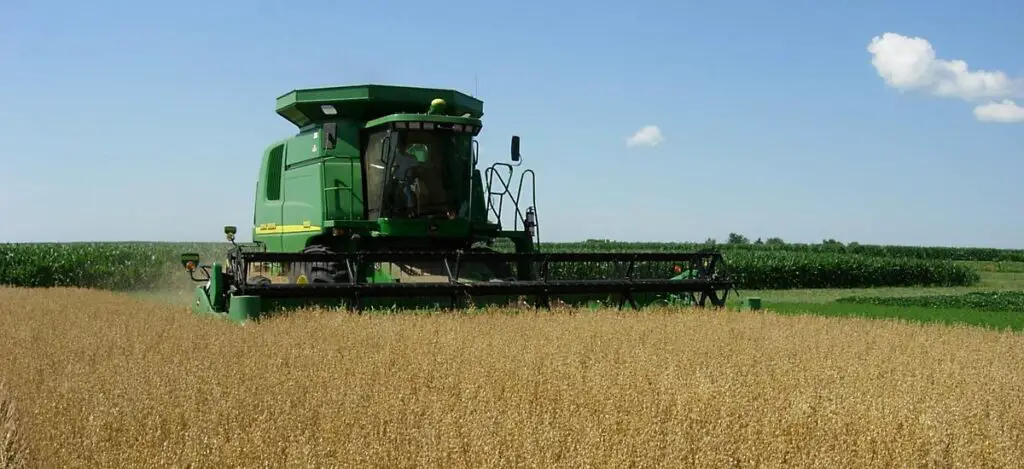
This image is property of www.ucsusa.org.
This post may contain affiliate links which means I may receive a commission for purchases made through links. Learn more on my Private Policy page.

